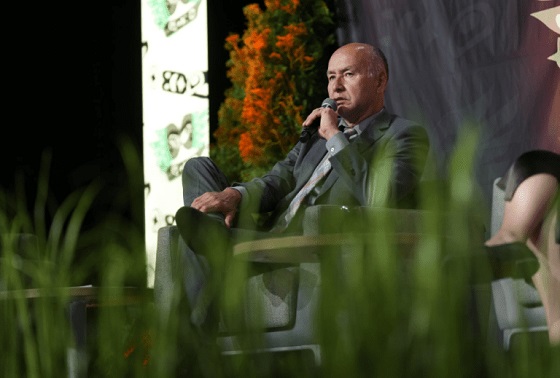Bruce Dowbiggin
When Russians Were Cool: How Detroit Brought Down The Wall
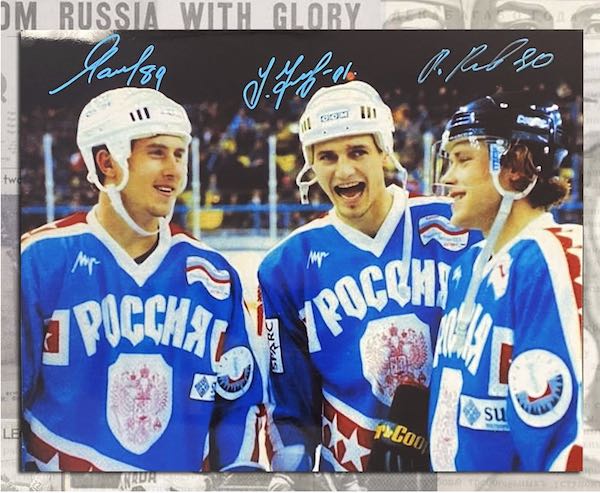
The Ukraine invasion has caused repercussions everywhere— even in hockey. The NHL, IIHF and the CHL have all responded in different ways to punish the aggression shown by Vladimir Putin. The CHL, in particular, has banned the drafting of Russians and Belorussians teenagers in this year’s bantam draft.
This overreach is all the rage with officials offended by Putin (the Metropolitan Opera fired one of its star soloists, Russian Anna Netrebko, for not condemning Putin enough). Not since the 1980s, when the dying USSR forbade the drifting on players into the NHL, has there been such distrust of Russians for political reasons.
In our new book Inexact Science, my son Evan and I recalled how the Detroit Red Wings, under chief scout Neil Smith, cracked the bias against Soviet (Russian) players in the historic 1989 draft as they poached a Hall of Fame defence man from Sweden and two Russian stars— Sergei Fedorov and Vladimir Konstantinov, in the middle rounds of that draft. And how it could have been much greater with a third Russian who got away.
“In 1986, Smith had been sent on a mission to find a full-time European scout for Detroit. Visiting Sweden, he encountered Christer Rockstrom. Smith was already somewhat acquainted with this scouting whiz, because Christer had been the cab driver who would take him to and from games he was scouting. Realizing he was dealing with a hardcore but perceptive fan who knew the players inside and out, Smith persuaded the Wings to give the Swede some scouting employment on a part-time basis, and then promoted him to the full-time European scout role a couple years after. It was a partnership that paid huge dividends.
The results of the organization’s new dedication to searching deeply into Europe was never more evident than with their third-rounder in the 1989 draft. That pick (number 53) may just be the best mid-round steal in NHL draft history. Rockstrom had put in tremendous diligence to find him, alerting his higher-ups to this thin, wiry kid playing for VIK Västerås HK of the Swedish Elitserien. A teenaged defenceman who had drawn into only 20 games in 1988–89 with just two assists to show for it, this player didn’t get much ice time when he actually did find his way into the lineup. Nonetheless, he happened to catch Rockstrom’s eye. That D-man was none other than Nicklas Lidstrom.
Fearing Lidstrom would be lost to them in the 1990 draft, when he’d be considered a first-round-worthy prospect, Detroit pounced a year in advance. Rockstrom convinced the Wings brass to use their last possible chance to grab Lidstrom—a potential gem who he believed would turn into a top pairing defender. Wary that someone could spill the beans to other teams, only four members of the organization—Devellano, Smith, Holland and Rockstrom—knew the secret until the day of his selection.
It worked like a charm. Lidstrom was still available come round three and was taken by the Wings—to the confusion of many in attendance. Even the NHL’s Central Scouting Bureau had very little info on what was considered quite an off-the-board choice (or “project,” as it’s often dubbed today).
As the league scrambled to figure out the Lidstrom pick on the draft floor in Minnesota, the Wings were thinking even further to the east for other delightful discoveries. Once the spring of 1989 rolled around, Soviet authorities had finally begun actively marketing some of their established stars to interested buyers in North America… it was still believed that the Soviets would want to hang on to their elite younger talent for several years to come. This mindset warded off many teams from wanting to “waste” a pick on such an arduous scenario. The Wings were not so easily scared in 1989. Having already passed on grabbing Sergei Fedorov when they had the chance in 1988, they used their fourth-round pick, number 74 overall, to select him the following year.
Devellano certainly wasn’t planning to miss out on Fedorov on this particular occasion. As he told NHL.com in 2015, “My thinking was, ‘Let’s call a spade a spade; how many fourth-round picks who are North American make it big?’ Very few… So what I said to myself was, ‘This is the best 19-year-old in the world, and I’m going to pass on him (again) to probably take a minor-league player?’ Forget about that, he’s coming on the Red Wings’ list, and we’ll worry about it in the future.” A star centre with Moscow CSKA, Fedorov internationally and domestically was featured as the playmaking, defensively responsible force on a line with fellow teenaged phenoms Alexander Mogilny and Pavel Bure—a ridiculously potent grouping that was the equivalent of a 2004 Russian squad icing a line with Evgeni Malkin between Alex Ovechkin and Ilya Kovalchuk.
Mogilny himself had been secured by the Sabres with the 89th overall pick a year earlier, but scouts were salivating that perhaps Bure or Fedorov could be available the next year as well. Fedorov had even been offered the chance to jump ship with Mogilny earlier. Before becoming the first Soviet player to successfully defect, Mogilny revealed his intentions to close friend Fedorov in a Stockholm hotel room they shared. Fedorov rejected the offer to join him, however, figuring it was a lark, prank or some sort of joke that was never supposed to be acted upon. But within 48 hours of the chat, Mogilny bolted the premises in an elaborate escape where he gained contact with the Sabres and the parties enacted a covert flight plan into the USA. While Fedorov stayed put for the meantime, the Wings were undeterred in taking him, even if it made the Soviet authorities keep even stricter surveillance on their prized pupils.
At his team’s drafting table that day (in 1989), Devellano reportedly promised Smith that they could go after at least one more Russian before the day was over. That next one ended up being Fedorov, who many whispered might just have been the best on that line because of his uncanny ability to handle the duties of a two-way centre while the explosive Mogilny and Bure were freed up to earn the glory of scoring most of the goals. Devellano would make his reasoning clear down the road by stating, “As was the case with Petr Klima, my strategy was simple. We would draft the best players, and if they happened to be behind the Iron Curtain, we would use our ownership resources to find a way to get them out.” Such boldness confirms the theory that quality ownership is perhaps the most important element in forging a perennially successful sports club.
Indeed, the Ilitches—who also own the Detroit Tigers—were the polar opposite of what Wings ownership had been under Bruce Norris. Their willingness to use their big dollars, trust their personnel and treat their employees with a degree of loyalty and compassion certainly gave the franchise some incredible mileage in their eventual reign as the model NHL organization from the mid-1990s to the early 2010s. The drafting wizardry of 1989 didn’t necessarily begin and end with the Wings, though. And it could’ve been even richer. While Wings personnel in later years claimed they were ready to grab Fedorov’s linemate Bure with their sixth-round pick and deal with any questions of his eligibility later, they never got the chance to add him. Another team’s plans got in the way.
Detroit’s management group had apparently mused about grabbing Bure in the fifth round after already having secured Fedorov. As Holland told the Toronto Star’s Bob McKenzie in 1995:
We (were) at the draft table and Christer tells Neil “Now we should take Bure”… Neil said he didn’t think Bure had played enough games to be eligible. So Neil goes and checks with (NHL vice-president) Gil Stein, and Stein tells Neil that Bure has only played seven games and it has to be eleven (sanctioned games) to be an eligible pick. Neil comes back and tells us that, and Christer says “No, that’s not right. He played eleven. I know he played eleven.” Neil goes back to Stein and tells him our European scout said Bure should be eligible.
Stein still said no. The NHL’s records showed just five games played in 1987–88—figures Rockstrom believed were erroneous. So Neil comes back to the table and it’s coming to our turn. We didn’t think Bure was eligible, so we took someone else (Shawn McCosh)… Finally, Neil said we were going to take Bure with our next pick no matter what and let the league settle the eligibility thing later. We were just about to pick him when the Canucks announced his name.

It was Canucks GM Pat Quinn who swooped in on Bure during that sixth round (overruling his second-in-command, Brian Burke, who at the time thought Bure was too small for the big leagues of North America). Thankfully for the Canucks, their head scout, Mike Penny, agreed with Rockstrom’s assertion that Bure had made the required number of appearances and convinced his boss to turn in the card with Bure’s name on it. With whispers that the Oilers were looking to nab him too, the Canucks stepped up to make “The Russian Rocket” their own at number 113, and did so only three spots ahead of where the Wings ultimately took Dallas Drake—perhaps Detroit’s most successful North American pick that year, but a far cry from a future Hall of Famer like Bure.
As consolation the Red Wing later nabbed Vladimir Konstantinov in the seventh round. To put the finishing touches on their 1997-98 Stanley Cups they added USSR stars Igor Larionov, Sacha Fetisov and Slava Kozlov. The NHL— and Don Cherry— was never the same after the triumph of the Russian Five
Bruce Dowbiggin @dowbboy is the editor of Not The Public Broadcaster (http://www.notthepublicbroadcaster.com). The best-selling author was nominated for the BBN Business Book award of 2020 for Personal Account with Tony Comper. A two-time winner of the Gemini Award as Canada’s top television sports broadcaster, he’s also a regular contributor to Sirius XM Canada Talks Ch. 167. His new book with his son Evan Inexact Science: The Six Most Compelling Draft Years In NHL History is now available on http://brucedowbigginbooks.ca/book-personalaccount.aspx

Bruce Dowbiggin
Canada’s Humility Gene: Connor Skates But Truckers Get Buried
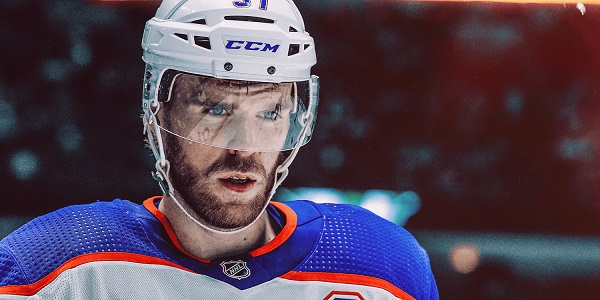
My friend and colleague Roy MacGregor used to talk about the “humility gene” in Canada’s hockey heroes. From Gordie Howe to Jean Beliveau to Wayne Gretzky it described the aw-shucks attitude of the top players in the game, who are as Canadian as Roy’s famous canoes.
The refusal to go Hollywood like the NFL, NBA or MLB stars was a defining characteristic of the hockey culture that once bound Canadians. For decades this “fear of flying high” was used by the NHL against the stars when it came to getting paid. Even when players belatedly started a union, their executive director Alan Eagleson did everything he could to suppress salaries and please his buddies in the owners’ box.
What Eagleson’s treachery didn’t accomplish the Tallest Wheat syndrome in Canada did . “You’re paid to play a child’s game. When is enough money enough? You should be grateful the owners let you wear their uniform.” For most players the fans’ withering guilt was the worst fear. In short, outsiders are not allowed to rip on Canada’s stars, but Canadians themselves are free to bring low their heroes.
In our obit for Bob Goodenow, Eagleson’s successor at the NHLPA, we described the slow, painful climb to final self determination in the 1990s. “It’s hard to understate the mentality he had to change… Goodenow convinced hockey players that to earn their worth in the market they had to stick together in negotiations.”

This is relevant this week as Canada’s star player Connor McDavid resurrected the humility gene in Edmonton. The greatest player in his generation McDavid held all the cards to negotiate a new contract with the Oilers or whomever he wanted. Everyone outside Edmonton— particularly his hometown Toronto Maple Leafs— wanted a piece of McDavid and was willing to pay a huge price for him.
As a hint at what McDavid might earn, Minnesota’s Kirill Kaprizov, who’s never won a major award or played past the first round of the playoffs, just received $136 million for eight years ($17M per year). The new CBA allows that soon the top players could earn as much as $20 M a year.
But this was humble time in a Canadian city mortified that its coolest kid was leaving. What to do? Being a self-deprecating Canadian and successor to the humility gene McDavid chose to halve the baby, taking a preposterously low $12.5 a year for two years in Edmonton while also making it obvious he’s gone should the Oil again fail to win the franchise’s sixth Stanley Cup.
It was the most Canadian solution to wanting to be a good guy for a city that, trying to being kind, isn’t Palm Beach or Brentwood. While hinting he will cash in later.
For certain the low-ball conclusion to what was to be a season of painful interviews about his future did nothing to endear McDavid to his fellow NHLPA members. Notwithstanding Kaprizov’s haul, McDavid’s cratering will put a chill on salaries for stars while putting a big smile on the face of NHL commissioner Gary Bettman. He has players back in the barn, and he has Canada to thank for it.
We saw that same Canadian herd instinct in the election when the Liberals marshalled ex-pat Mike Myers to reinforce the suppressing instinct. Exposed by Trump for their handling of their economy the past 10 years the Laurentian elite recoiled in horror, preferring the sunny fairways of self delusion over the reality of a dysfunctional nation.
The best bookend to McDavid’s humility is the concurrent legal resolution to the Truckers Convoy of 2022, a non-violent event (okay, someone pissed on the Cenotaph) that convulsed the nation for three weeks. If a Covid mask obscured your view of the circus let’s just say it was a sit-in by truckers upset with the arbitrary virus/ vaccine actions inflicted by Justin Trudeau’s government.

While Trudeau hid beneath his desk the truckers frolicked next to Parliament Hill, honking horns and playing on Bouncy Castles while the Hill’s media entertained thoughts of Lenin seizing power in 1917. The reality of the demonstration— no guns, no breaking down the doors of Parliament, no firebombing Trudeau’s residence— was lost on locals inconvenienced by long lineups at Shoppers Drug Mart. There was no mention of regime change or insurrection. Except in the eager-to-please-Justin media.
The high-profile stunt from the West clearly Irritated Woke Canada clinging to rumours of MAGA invasion (still embraced by these spares ), firebombing and CBC suggestions of Putin espionage demanded the full weight of the law for organizers Tamara Lich and Chris Barber.
So Trudeau sent in mounted police to bowl over grannies, and his justice droogs threw the book at the evil doers behind the convoy. Okay, they were charged with mischief. Remember. Not assault. Not destruction of property. Not subversive behaviour. Not overthrowing government. Not possession of weapons. All this performative justice applauded by Canada’s purchased media. Even when the OPP head of intelligence found no credible evidence of threats to national security, extremism, foreign influence (e.g., Russian or American sources, or Donald Trump), or plans for violence.
Because you can’t flaunt Canada’s Liberals and get away with it. So Lich and Barber were keel-hauled through the Canadian justice system and jails for three years. Huffy prosecutors and tendentious judges made the proceedings look like The Mikado, slapping the pair with criminal records and house arrest for not being sufficiently contrite to the Laurentian elites.
They still face civil charges from people whose bed times were upset by the truckers. And the judge hinted that they’ll be made to pay for the cost of cleaning up Wellington street after turning it into a party zone. But by God, they’ll think twice about challenging the federal liberals again.
And so, kids, our lesson? It’s okay to pretend humility in Canada. Just don’t dare get above your station.
Bruce Dowbiggin @dowbboy is the editor of Not The Public Broadcaster A two-time winner of the Gemini Award as Canada’s top television sports broadcaster, his new book Deal With It: The Trades That Stunned The NHL And Changed hockey is now available on Amazon. Inexact Science: The Six Most Compelling Draft Years In NHL History, his previous book with his son Evan, was voted the seventh-best professional hockey book of all time by bookauthority.org . His 2004 book Money Players was voted sixth best on the same list, and is available via brucedowbigginbooks.ca.
Bruce Dowbiggin
Elbows Up Part Deux: Liberal Canada Now Riding The Blue Jays
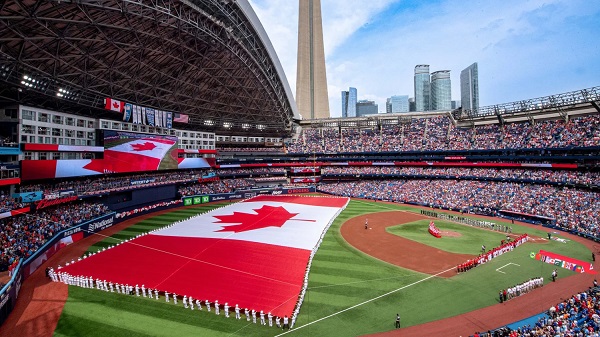
And you thought Elbows Up was just a hockey thing? Ha! The folks who marketed the Mike Myers hockey election campaign to use Donald Trump to distract Canadians have decided that baseball fans must too be swept up in patriotic fury to support the governing Liberal minority. All over a baseball team with zero Canadians on its roster.
This from the nation that half an hour ago was telling the world Canada was a genocidal settler tyranny burying murdered babies in the moonlight. Go figure.
Rogers Media is running commercials during the Blue Jays AL Divisional Series boasting in Liberal red and white “Proud owners of Canada’s national team”. (What team owner has ever put itself above the title on a sports team?) If you haven’t caught that ad there are others Rogers’ ads extolling its magnificence in giving Canada the highest telephone bills this side of Botswana. Oh wait… They say, Go Jays Go, Canada’s national team. Sorry about that.
The team’s announcers are also being made to read verbatim prefab trite slugs about the story of the Blue Jays not being written yet. (We counted three doing the hype before Gm. 1.) Watching the proud-as-punch onslaught from the team’s owner one would think this has to be more than Vlad Guerrero uber alles. And, of course, there is. Rudyard Griffiths, publisher of The Hub, calls it part of the “soft, silent takeover of the nation’s press”. Having used public money to bribe… er, support even the richest media in the country Liberals can count on their support for tongue bathing of Mark Carney’s faculty lounge.
The intro for Game One of the ALDS lathered the “Canada’s team” lard. You’re supposed to think its the 1992-93 World Series all over again. Don’t pay attention to those MAGA cranks in the corner. Rogers is not alone. Much of the advertising during the Jays/ Yankees equates Canada’s team and Canada proud. The advertisers on the games are punctuating ads with a “made in Canada by Canadians” angle (even as jobs flee the country).

But never has the Laurentian Elite of Canada needed a distraction from the mess of Canada’s Liberal hegemony. It can’t be seen that Trump was correct stating it was a better deal being part of the U.S. Samples of Elbows Down:
Canada has no mail system.
“Hollywood North” just got torpedoed by Trump.
Government financial watchdog said the economy is “unsustainable”
Country is in cost-of-living, unemployment and housing crises.
Imperial just let go 1,000 employees and sold its Calgary HQ.
There’s plenty more. Like the virtuous refusing to visit the U.S., the Jays’ insertion into the mindset of Boomer Canada is providential to advertisers who make a living pitching the Liberal brand. Almost as precious as “Our” team is the concept of the Blue Jays as a national team. It seems like only yesterday they were deposing the previous national team, the Montreal Expos. The ‘Spos had aided Toronto in getting a franchise in 1977. When Toronto sputtered in the early days the Expos gave them oxygen. But as we wrote in July of 2023, the newcomer turned on their National League cousins.

“As the Jays went from weak sister to equal partner to dominant team on the field winning the 1992-93 World Series, their tone about letting Expo games generate income in their territory grew less than cordial. Labatt Breweries owned the biggest, most lucrative market in Canada. And only they should profit from it.
This exposed the fundamental weakness of the Montreal franchise. The Olympic Stadium was proving to be a cold, fan-unfriendly disaster. Hundreds of thousands of English speakers had left the province when the Parti Québecois took power. At the same time as initial owner Charles Bronfman was tiring of coming up short on the field and repeated labour stoppages, the Expos were threatened with a severe hit to their broadcast revenues.
Their friendly sharing of MLB in Canada with the Jays now appeared naïve. MLB said the Expos could control Quebec and the Maritimes, but it would have to stay out of southern Ontario. McHale could see the writing on the wall. Owner Bronfman appealed to then-commissioner Bowie Kuhn for relief, saying this ruling would “ghettoize” the team within Canada. His intent on buying the club in 1969 had been to “bring Quebec into the nation”. Instead, the team he’d encouraged to join MLB was freezing the Expos out of the large English speaking markets.
After hearing from the Jays, MLB commoner Bowie Kuhn allowed the Expos to show 15 TV games a season in Ontario. McHale and Bronfman knew this was inadequate. As the Jays started getting into the postseason in 1985 and the Expos sank in the NL the die was cast. Making it worse, the Canadian dollar began its plunge that ended with a 62-cent dollar versus the U.S.

The 1994 season, in which Montreal had the best record in MLB, was cancelled. Bronfman sold the club to a consortium of owners without Bronfman’s means. By 2000, attendance nosedived as the Expos dumped their great core of Walker, Pedro Martinez, Moises Alou and John Wetteland. By the early 2000s, new American owner Jeffrey Loria was actively trying to sell the team to investors who’d move it to the U.S.
By 2005, the Expos were sold to new owners in Washington who renamed the club the Washington Nationals. Loria, meanwhile, was allowed to buy the Florida Marlins franchise, which he ran into the ground as he’d done to the Expos.
The Blue Jays, meanwhile swept in to capture the entire Canadian sports TV audience. They are today valued by Forbes magazine at a cool $2.1 billion. There was talk of transferring the Tampa Bay Rays to Montreal but that evaporated when local Florida politicians promised lawsuits. MLB is now talking about possibly returning to Montreal as an expansion club should they build a proper ball park.
Although who in Quebec has a billion to throw at a baseball stadium is unclear. And how they’d get past the Blue Jays monopoly on broadcast rights in English Canada is also a huge question. Just remember, however, that you needn’t look far to see who had a large hand in killing the Expos.
It was the Toronto Blue Jays.”
Bruce Dowbiggin @dowbboy is the editor of Not The Public Broadcaster A two-time winner of the Gemini Award as Canada’s top television sports broadcaster, his new book Deal With It: The Trades That Stunned The NHL And Changed hockey is now available on Amazon. Inexact Science: The Six Most Compelling Draft Years In NHL History, his previous book with his son Evan, was voted the seventh-best professional hockey book of all time by bookauthority.org . His 2004 book Money Players was voted sixth best on the same list, and is available via brucedowbigginbooks.ca.
-

 Also Interesting1 day ago
Also Interesting1 day agoLocal, Online, and Booming: The Business Shift Happening Across Alberta
-

 Media1 day ago
Media1 day agoResponse to any budget sleight of hand will determine which audience media have decided to serve
-

 illegal immigration20 hours ago
illegal immigration20 hours ago$4.5B awarded in new contracts to build Smart Wall along southwest border
-
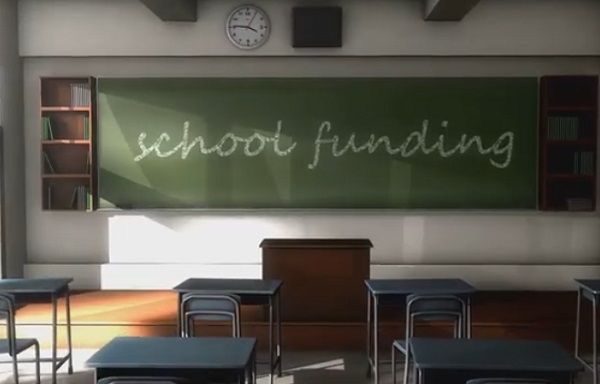
 Education1 day ago
Education1 day agoClassroom Size Isn’t The Real Issue
-
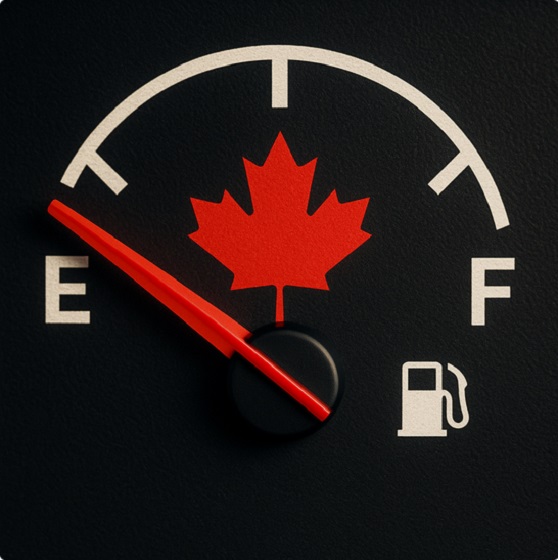
 Frontier Centre for Public Policy1 day ago
Frontier Centre for Public Policy1 day agoCanada’s Democracy Is Running On Fumes
-
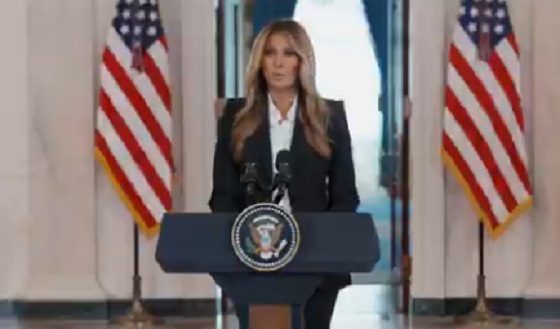
 International20 hours ago
International20 hours agoMelania Trump quietly reunites children divided by Ukraine war
-
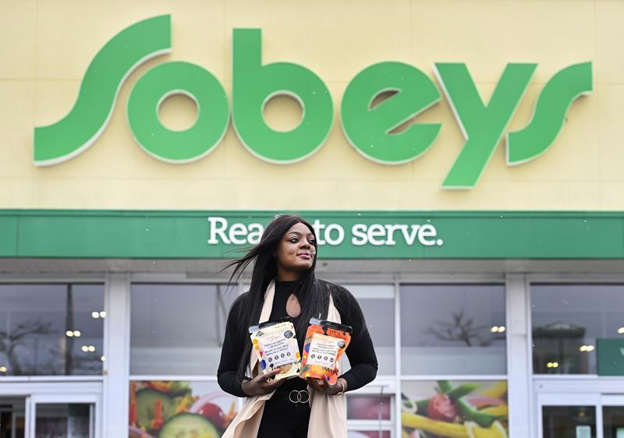
 Business1 day ago
Business1 day agoYour $350 Grocery Question: Gouging or Economics?
-

 COVID-1910 hours ago
COVID-1910 hours agoThe Trials of Liberty: What the Truckers Taught Canada About Power and Protest



